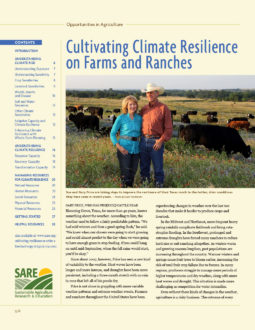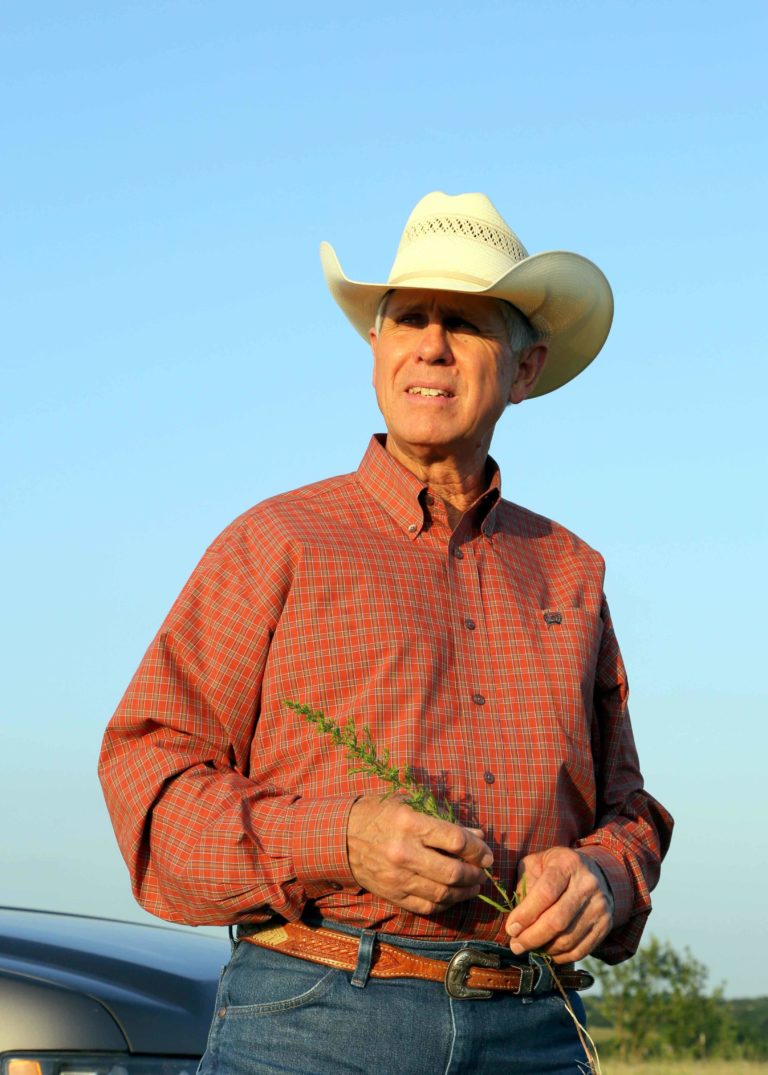Recall that vulnerability is a key concept in understanding your operation’s climate risk. Thinking about climate risk in terms of sensitivity (the response of individual components of the production system to exposures) and adaptive capacity or resilience (the ability of the production system as a whole to buffer damages and capture new opportunities) can help you assess your operation’s vulnerability. This in turn allows you to develop both short- and long-term strategies that are more likely to sustain your operation as weather patterns become more variable and extreme.
Creating a plan to manage climate risk and enhance the resilience of your operation is a step-wise process that involves answering four questions about the vulnerability of your operation to changing weather conditions:
- What are the key weather-related challenges? The goal in answering this question is to identify current and near term weather-related exposures specific to your operation. Table 1 summarizes current and expected changes in weather variability and extremes for seven U.S. regions.
- What are the key production threats from changing weather patterns and extremes? The goal in answering this question is to prioritize climate-related threats specific to your operation. Experienced producers will already have a good understanding of the key sensitivities of their operation to typical weather patterns, but may have to do research to identify new and emerging sensitivities associated with increasing weather variability and extremes.
- What are your options for addressing key weather-related threats? The goal in answering this question is to identify adaptive actions that address the key climate threats to your operation. You will want to develop a list of practices that enhance the response, recovery and transformation capacities of your operation. Be sure to include in this list practices that promote both specific and general resilience. A useful way to be sure you have considered all potential options is to think through, for each type of resource under management, the specific practices that enhance resilience and are a good fit for your operation.
- What is the best mix of adaptation options? The goal in answering this question is to find the most appropriate mix of practices that reduce climate risks and capture new opportunities for your operation. Selecting among options will likely involve some cost/benefit tradeoffs typical of traditional risk management, but it can be difficult or impossible to estimate the costs and benefits of climate resilience practices because of the uncertainties associated with climate risk.
When evaluating potential adaptation options, remember to include a mix of complementary practices that work together to enhance the resilience of your operation both now and over the long term.
Be careful to avoid depending on just one or two practices that target specific risks, such as drought resistant cultivars, irrigation, pesticides or insurance. Targeted risk management practices are often the best choice when addressing near-term, high-risk threats to the existing production system, but they can be costly, are likely to increase in cost and decrease in effectiveness over time, and may ultimately fail if the pace and intensity of climate change increase as expected.
Targeted risk management practices are most useful when they target high-value crops or livestock during sensitive life cycle stages (e.g., at birth, or during flowering or fruiting) and target high-value perennial crops near the end of a long production cycle, such as almonds or grapes. These practices can also be very useful during the early stages of a transition to a new, fundamentally different operation that positions the business to thrive in future climate conditions.
Charting Your Course in a Changing World
Climate risk is currently challenging many farmers and ranchers in the United States and beyond, and it is expected to increase in intensity through this century. Although we have much to learn about farming in a changing climate, sustainable agriculture, adaptive management and resilience thinking offer a useful set of principles, practices, tools and management strategies to reduce the risks and capture the opportunities created by the inevitable challenges ahead.
Gary Price is upbeat about the future of the 77 Ranch. He is confident that high-quality natural resources, easy access to technical support and his willingness to adapt will serve the ranch well in the years ahead. “We think we are on the right track,” Price said. “Everything in ranching is a moving target; it’s constantly changing, some things more than others. We must be very flexible in all that we do, and especially in our thinking, to adapt to changes. That’s just the way it is.”

